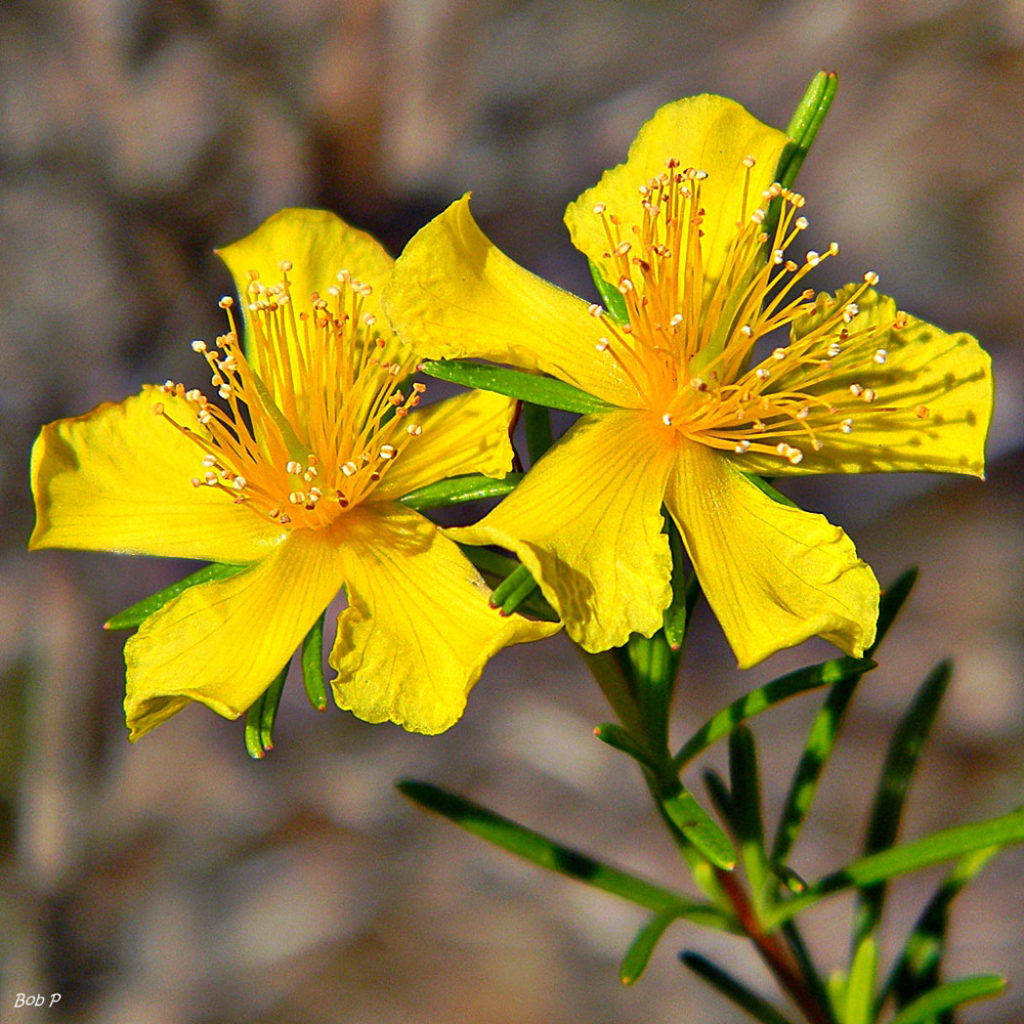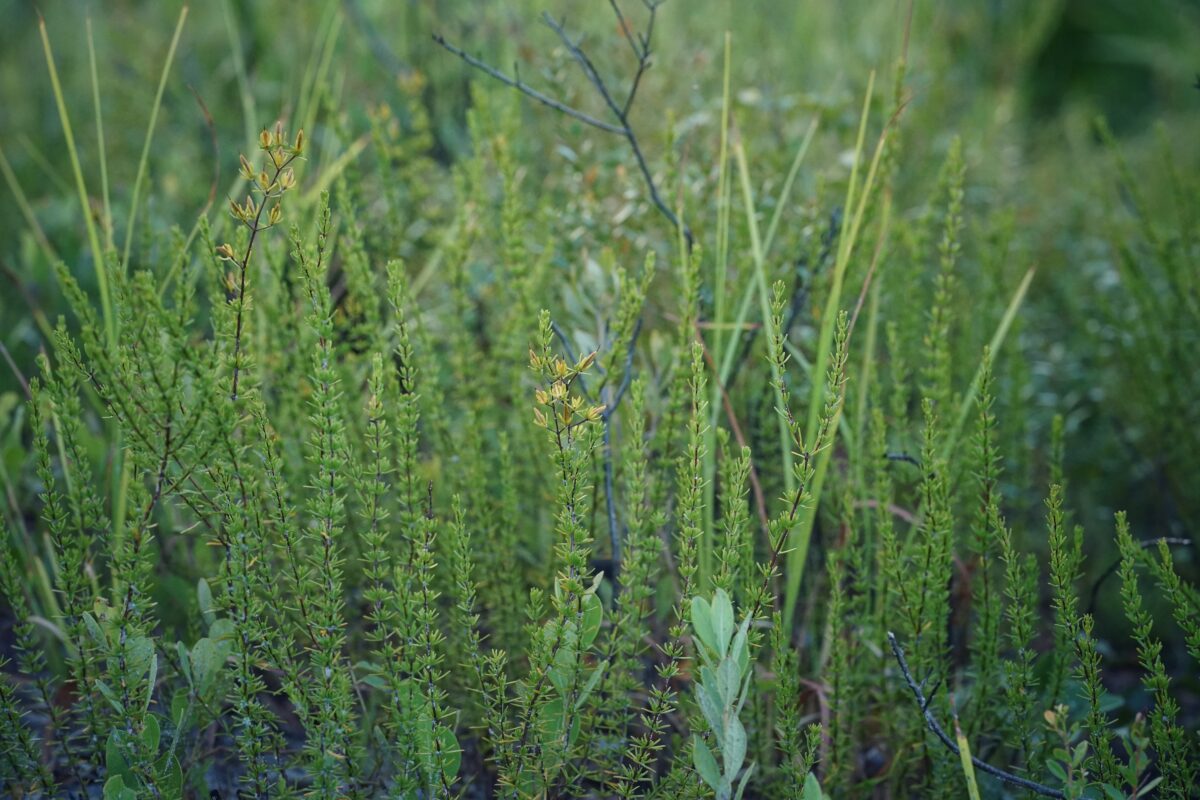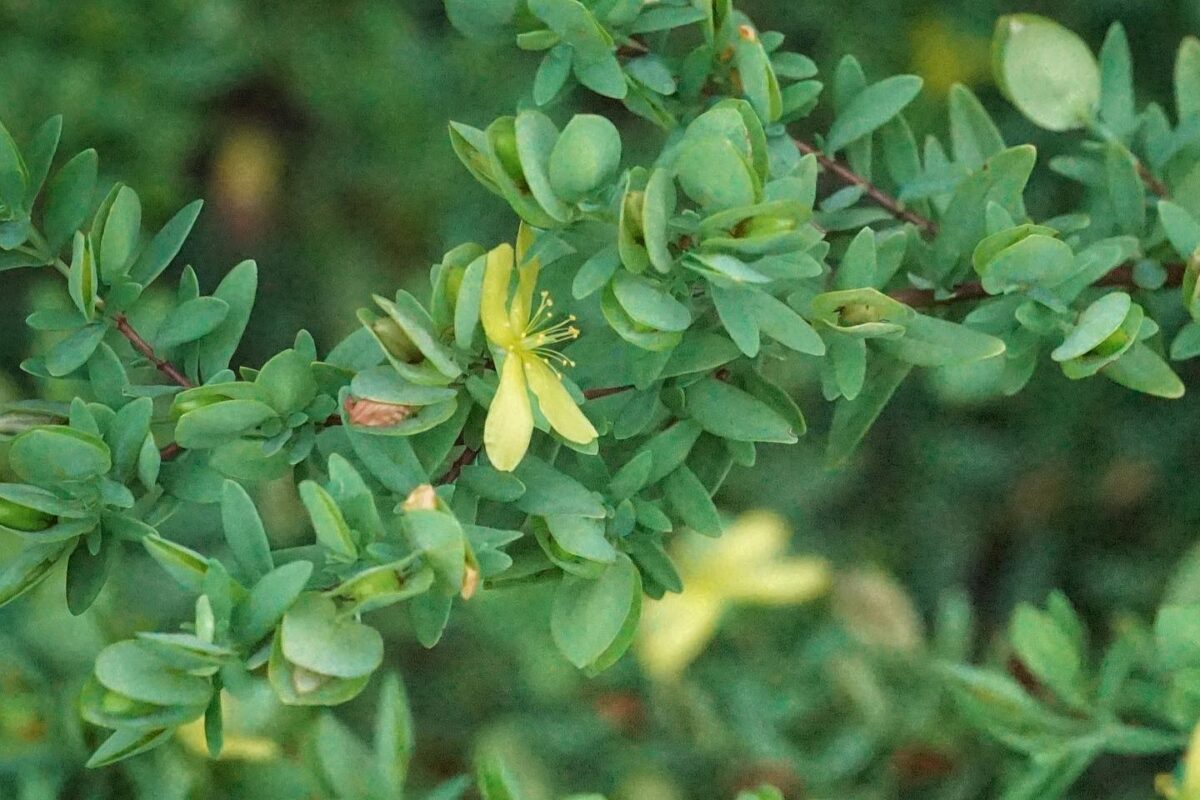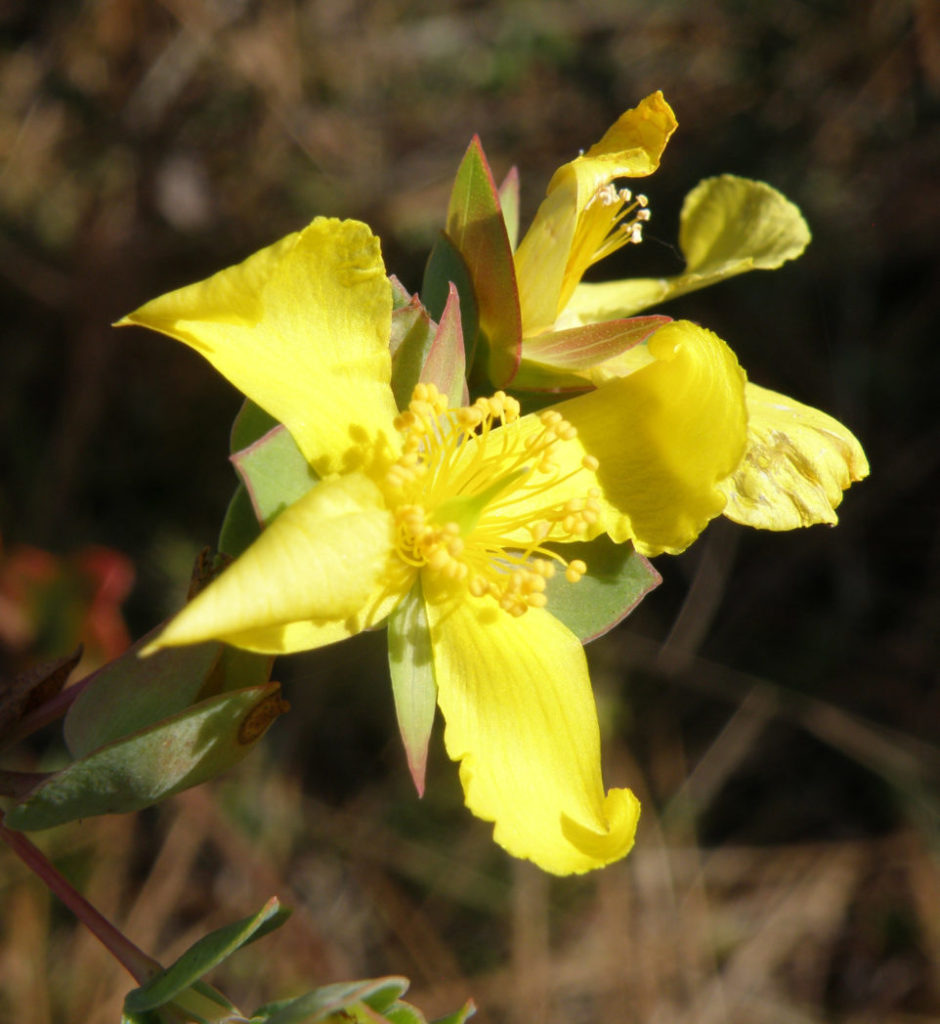Peelbark St. John’s wort
Pictured above: Peelbark St. John’s wort (Hypericum fasciculatum) taken at Sweetbay Natural Area in Palm Beach County, Florida. Photo by Bob Peterson (CC BY 2.0). Click on terms for botanical definitions. View post as a PDF
Also known as Sandweed, Peelbark St. John’s wort is an evergreen shrub found in wet pinelands and savannas, and along the margins of swamps, freshwater marshes and ponds. It typically blooms spring through fall, but may bloom year-round. The flowers are attractive to a variety of bees, including polyester, yellow-face, large carpenter, bumble, leafcutter, resin and sweat. The plant provides food and cover for birds and other small wildlife.
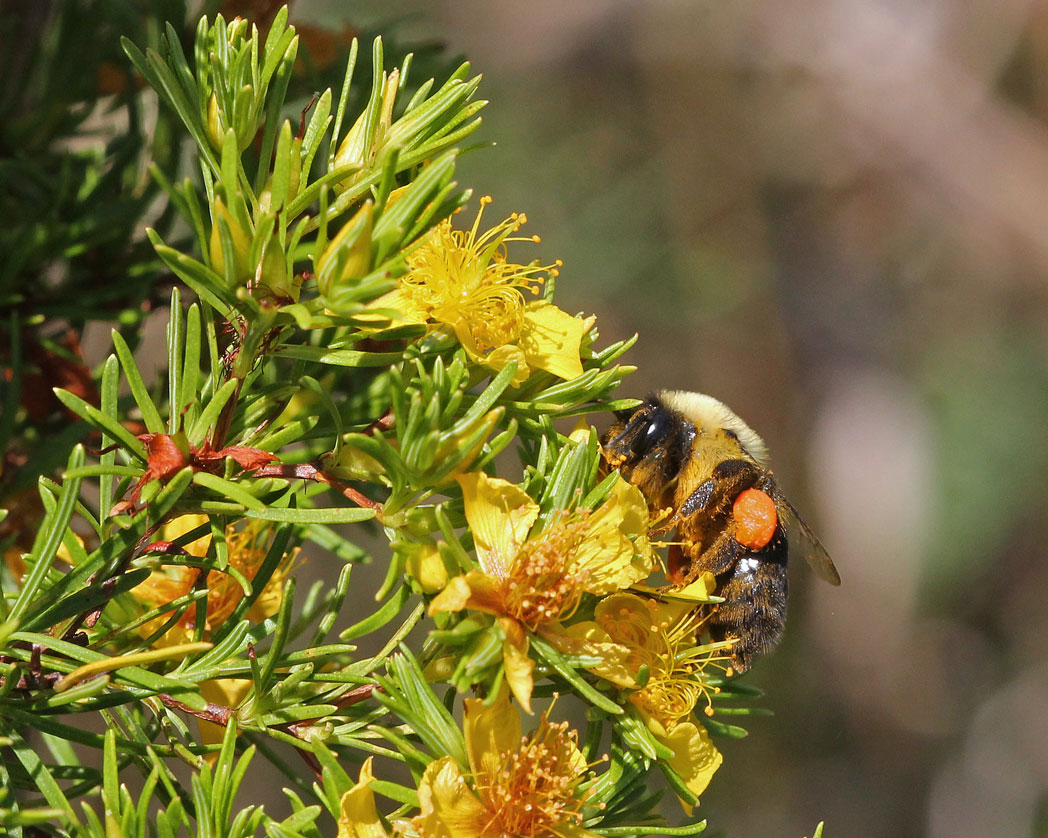
Photo taken at Chuluota Wilderness Area, Seminole County, FL by Mary Keim
Flowers are bright yellow, sessile and five-petaled with many conspicuous yellow-orange stamens. They may be solitary or born in clusters. Flowers are subtended by five linear sepals. Leaves are simple, sessile and needle-like with entire or revolute margins. They are oppositely arranged. Axillary fascicles of leaves are often present and may help distinguish the plant from other Hypericum species. Stems are multibranched with reddish bark that flakes off in papery sheets. In standing water, the plant may produce adventitious prop-like roots (similar to those of the Red mangrove). The fruit is an inconspicuous reddish-brown capsule that is narrowly ovoid.
Some taxonomists place the Hypericum genus in the Clusiaceae family, of which they consider Hypericaceae to be a subfamily (Hypericoideae). The species epithet fasciculatum is from the Latin fasciculus, meaning “little bundle.” It refers to the fascicle of leaves.
Family: Hypericaceae (St. John’s wort family)
Native range: Nearly throughout
To see where natural populations of Peelbark St. John’s wort have been vouchered, visit florida.plantatlas.usf.edu.
Lifespan: Perennial
Soil: Moist to wet, seasonally inundated sandy soils
Exposure: Full sun
Growth habit: 2–5+’ tall, usually as broad as tall
Propagation: Seed
Florida regions of landscape suitability: North, Central, South
Garden tips: Peelbark St. John’s wort is suitable for naturalistic plantings and wet gardens. It does not tolerate drought conditions.
Caution: The St. John’s wort that is promoted as a supplement for use in treating depression is a non-native species. According to Dan Austin in his book, Florida Ethnobotany, using native St. John’s wort can lead to dermatitis or photosensitization due to a hypericin compound found in the plants.
Peelbark St. John’s wort is occasionally available at nurseries that specialize in native plants. Visit PlantRealFlorida.org to find a native nursery in your in your area.
Learn more about Peelbark St. John’s wort from the Florida Native Plant Society and the Institute for Regional Conservation.
For information on other Hypericum species, see these resources:

